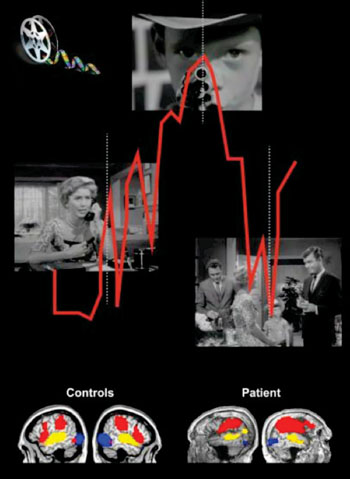Neuroscientists Differentiate Patients in Ongoing Vegetative State
By MedImaging International staff writers
Posted on 30 Sep 2014
Researchers are employing advanced brain scanning techniques by showing that a short movie can be used to detect consciousness in vegetative state patients. Posted on 30 Sep 2014
The study included a Canadian participant who had been entirely unresponsive for 16 years, but is now known to be aware and able to follow the plot of movies. Lorina Naci, a postdoctoral fellow from Western University’s (London, Ontario, Canada) Brain and Mind Institute, and her Western colleagues, Drs. Rhodri Cusack, Mimma Anello, and Adrian Owen, reported their findings September 15, 2014, in the journal Proceedings of the National Academy of Sciences of the United States of America (PNAS).

Image: Patients in a vegetative state had brain activity levels matching those of healthy controls while watching a Hitchcock film (Photo courtesy of Western University’s Lorina Naci).
While inside the functional magnetic resonance imaging (fMRI) scanner at Western’s Centre for Functional and Metabolic Mapping, participants watched a highly engaging short film by Alfred Hitchcock. Movie viewing elicited a common pattern of synchronized brain activity. The long-time unresponsive participant’s brain response during the same movie greatly resembled that of the healthy participants, suggesting not only that he was consciously aware, but also that he understood the movie.
The film was the 1961 “Bang! You’re Dead” episode of the TV show Alfred Hitchcock Presents, which had been condensed down to eight minutes. It showed a five-year-old holding a partially loaded gun, which he thinks is a toy. The child shouts “bang” each time he aims at someone and squeezes the trigger. While watching the clip, brain activity of participants was tracked using fMRI scanning.
Participants, including the man who had been in a vegetative state for 16 years, showed similar patterns of activity in the higher cognition regions as well as regions involved in processing noise and images. “For the first time, we show that a patient with unknown levels of consciousness can monitor and analyze information from their environment, in the same way as healthy individuals,” said Dr. Naci, lead researcher on the new study. “We already know that up to one in five of these patients are misdiagnosed as being unconscious and this new technique may reveal that that number is even higher.”
Dr. Owen, the Canada Excellence research chair in cognitive neuroscience and imaging, explained, “This approach can detect not only whether a patient is conscious, but also what that patient might be thinking. Thus, it has important practical and ethical implications for the patient’s standard of care and quality of life.”
The investigators hope that this innovative approach will enable better determination of behaviorally unresponsive patients, who may be misdiagnosed as lacking consciousness.
Related Links:
Western University














